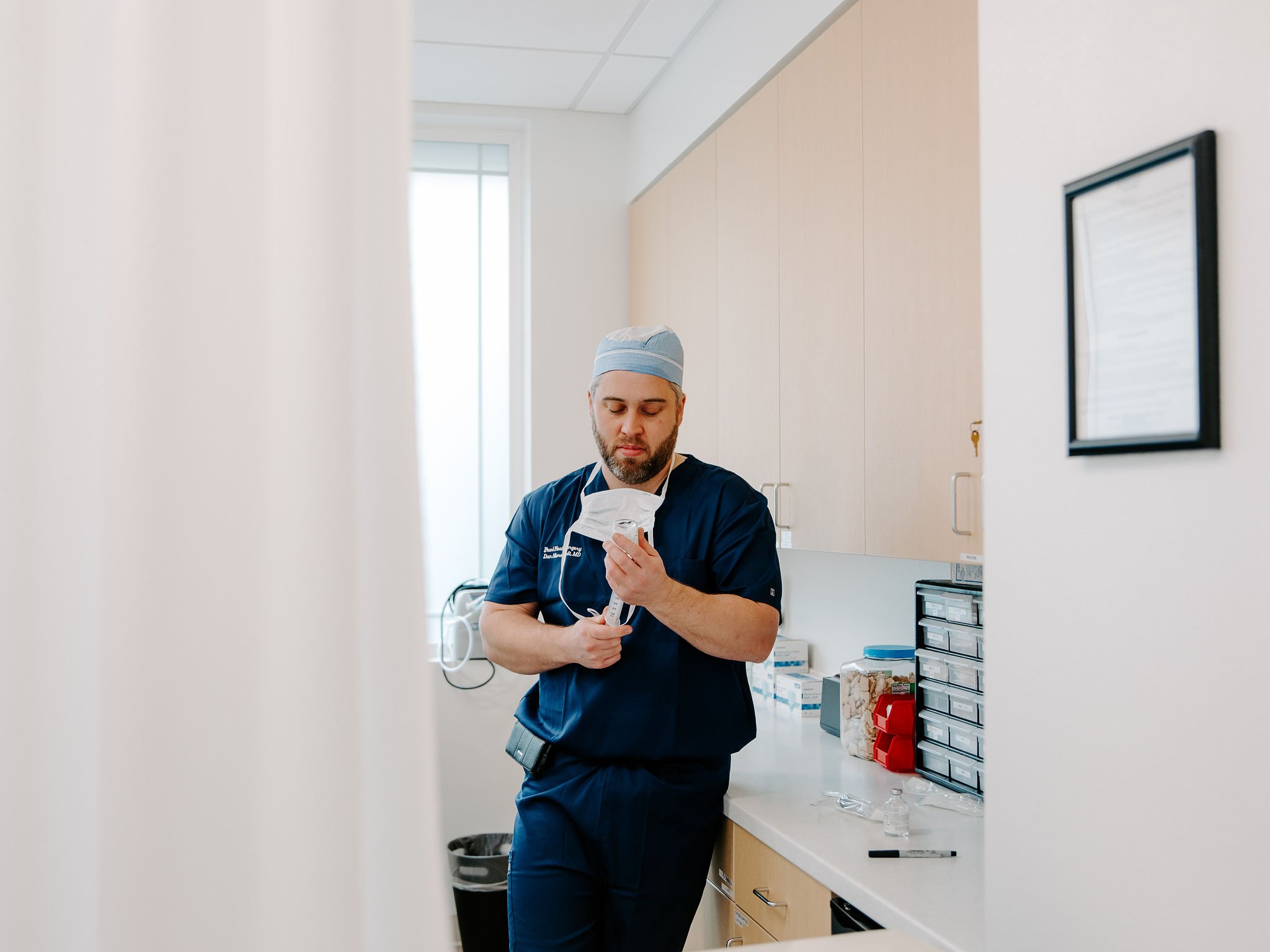Nerve Blocks for Pain Management
Pre-Surgical Nerve Blocks
Here at Pearl Plastic Surgery we offer a Peripheral Nerve Block as an add on to your surgery, whether that is with us or another surgeon. It is know that pain creates more pain, therefore it is beneficial to preemptively treat the anticipated pain that comes with having surgery.
Our Nerve Block appointments take place the day prior to your scheduled surgery and take roughly 30 minutes. You will meet with our MD Anesthesiologist and discuss your surgery, review the facts about Nerve Blocks and receive the treatment.
What Are Nerve Blocks
All of the pain in our bodies is transmitted by nerves. When you smash your finger, the nerves send that pain signal from the finger, to the arm, to the back and then to the brain. A peripheral nerve block, PNB for short, is where we place some local anesthetic around the nerves and ‘block’ that transmission of pain signals to the brain. This removes the sensation of pain, causes numbness and even weakness. The weakness happens because the same nerve pathways that transmit pain also transmit the desire of the brain to move to the finger or the arm.
Surgery can be painful and the addition of nerve blocks can drastically reduce the pain that one suffers and thereby decreasing the number of pain medications that you would have to take. The most common application of a nerve block is the ‘numbing’ that you receive when going to the dentist. The key differences between the local anesthetic at the dentist and what we do at Pearl Plastic are: how targeted it is and how long it lasts.
Targeted
Our peripheral nerve blocks are directed targeted by the anesthesiologist. We use an ultrasound machine to see the nerves and directly observe the local anesthetic bathing the nerve. This allows us to use much lower doses and increases the chances of success of the nerve block. The success rate of the type of nerve blocks at Pearl Plastic is over 99%.
Long Lasting
Our peripheral nerve blocks last a long time. Now, everyone is different and the duration of blockade is highly variable. However, we commonly see patients getting 20-24hours before the block starts to weaken enough to need to take additional pain medications. The strength of the block then slowly tapers off over the course of the next couple of days until it’s fully gone.
What’s not covered by blocks is pressure. Pressure or stretching can cause discomfort. Unfortunately, the sensation of stretching and pressure is very difficult to remove and is not expected to be removed by a nerve block. Most people refer to a general anesthetic as ‘going to sleep’ for surgery. Anesthesiologists have a number of methods at their disposal to help remove the memory of surgery. Discuss the options with your anesthesiologist, but there are a number of options where a nerve block can provide the anesthesia for a surgery and then you would receive some sedation for comfort.
Frequently Asked Questions
-
Nerve blocks are an excellent way of helping relieve pain after surgery and decreasing the number of pain medications that you will have to take during your recovery. The procedure to place the nerve blocks is often done before the surgery starts so that they are working when you wake up from surgery. Nerve blocks cover a significant amount of the pain, but they don’t cover all of the pain.
-
Nerve blocks do not cover the sensation of stretching and the sensation of pressure. Both of those feelings can also be painful. For example, a blood pressure cuff squeezing your arm can get uncomfortable and even painful after a while. The feeling of pressure, tightness, fullness, or squeezing is normal while the nerve blocks are at full effect.
-
Nerve blocks usually last at least 20-24 hours before the effect starts to wear off. Sometimes they can last 3-4 days before starting to wear off. Once they start wearing off, you will begin to feel pain. As someone who is experiencing the pain, it can be tough to gauge that the whole block hasn’t worn off. The block will slowly wear off over 1-2 more days. That means that you have plenty of time to get on top of the pain. However, it also means that the pain will slowly intensify over the course of 1-2 days!
-
We recommend that patients take a pain pill when they first start feeling pain that is uncomfortable. Start with either one or two pain pills depending on your pain tolerance. But remember, the pain will slowly increase over the course of two days. You will likely have to increase the number of pain medications and how often you take them until the block fully wears off. Be careful when you first start taking pain medications. They can cause sedation, so have someone look after you when you take the first dose. They also cause constipation. If you are one who can have trouble with that, consider taking a stool softener (Docusate) when you first start taking the pain pills. Sometimes people like to minimize the number of pain medications because of their side effects. That is a great goal, however, if you are unable to walk around without large amounts of difficulty, you need to take more pain medications.
-
If the pain is not controlled by the pain medications after the blocks have worn off and you would like repeat nerve blocks, please call the office 360-878-9300 to schedule a time to do the procedure. Please make sure to keep taking your pain medications to keep on top of the pain because it may take a number of hours before the procedure can be done if the doctor is performing procedures off-site, a great distance away.



